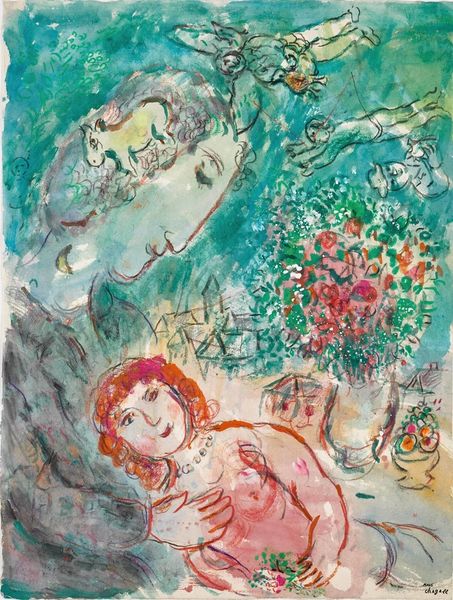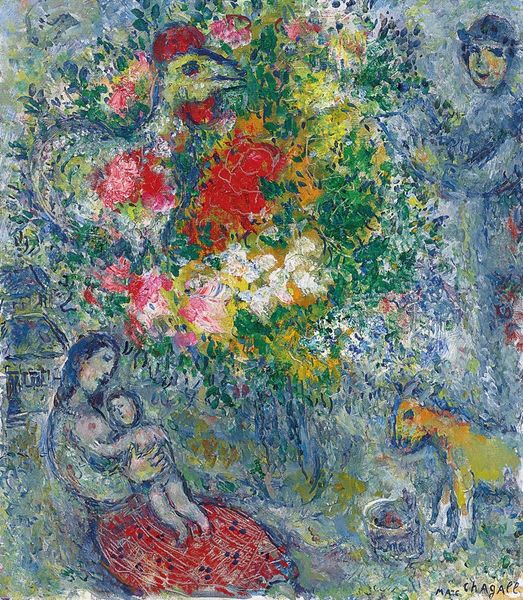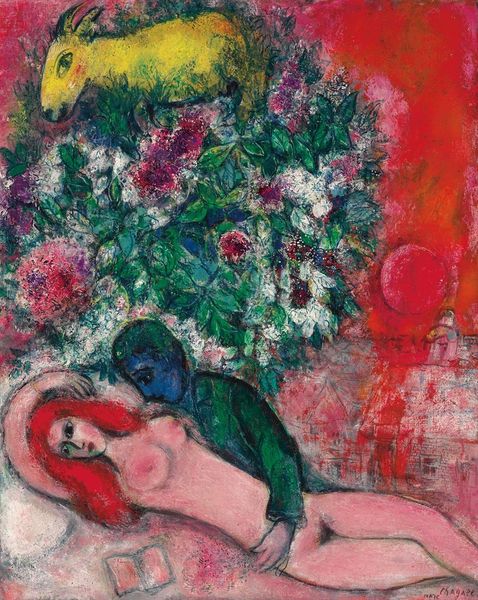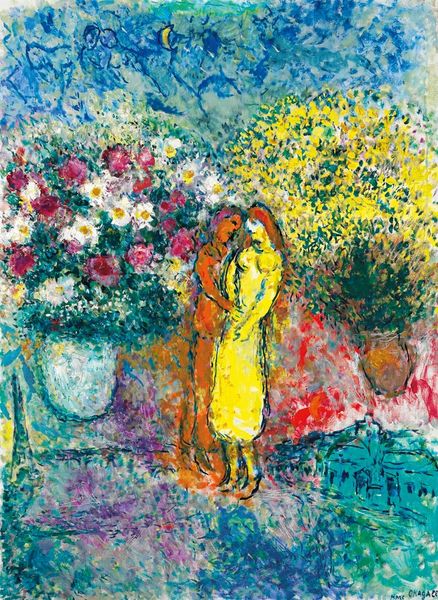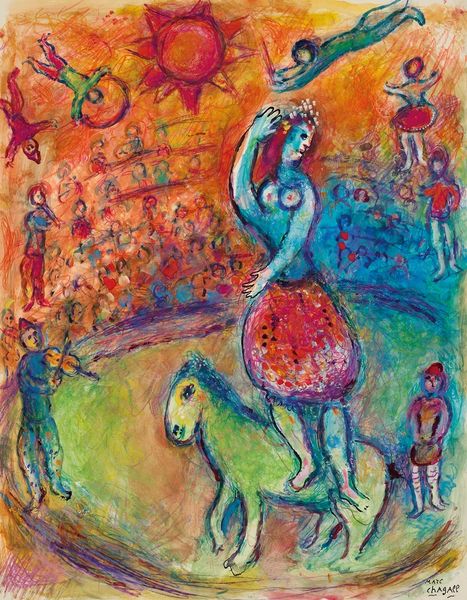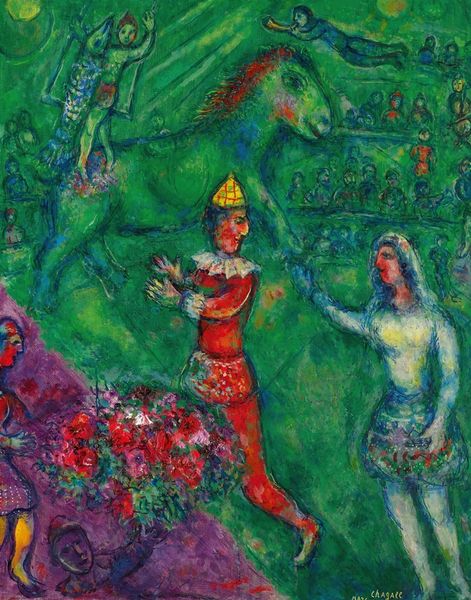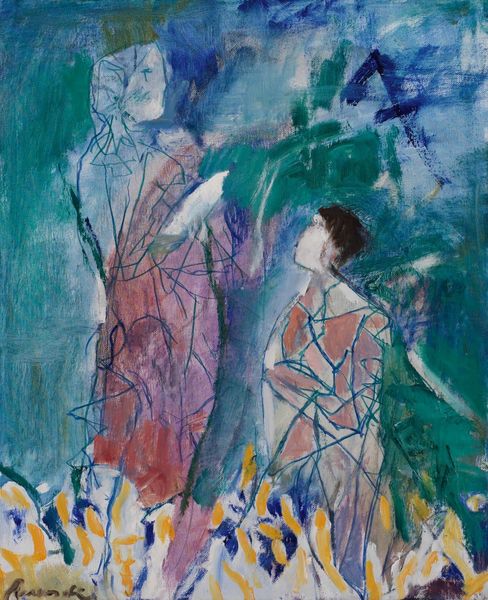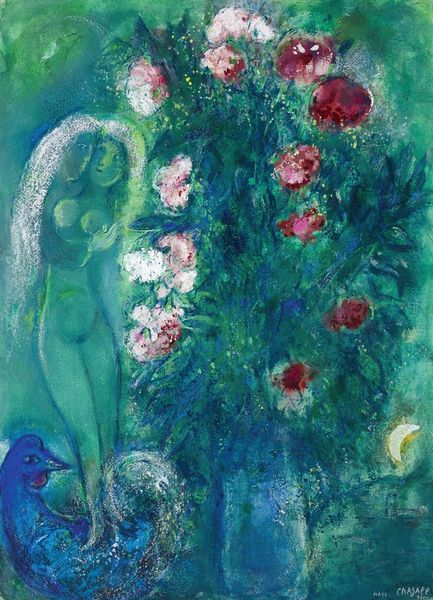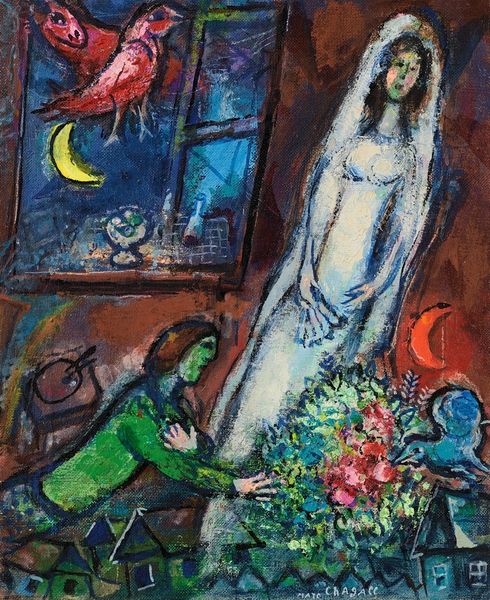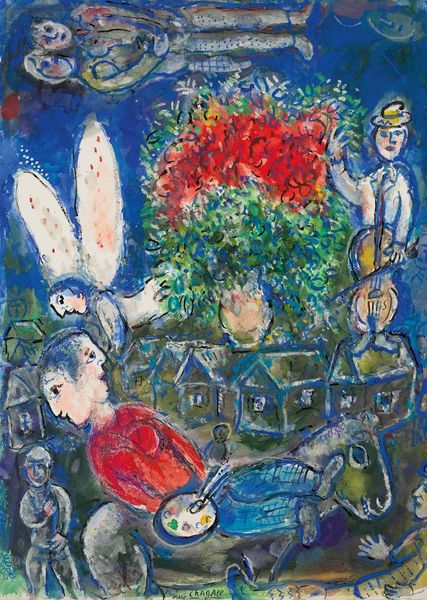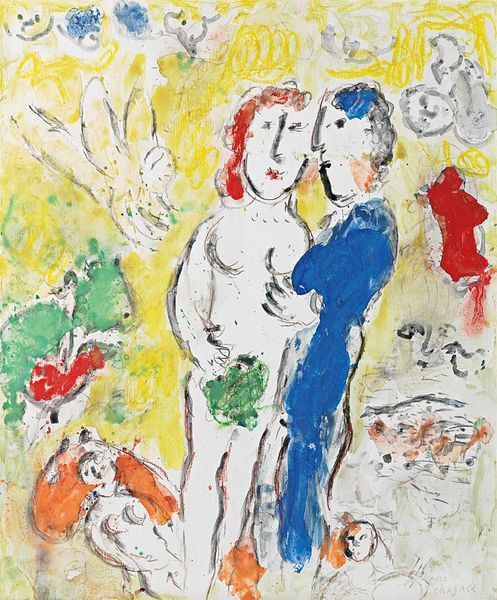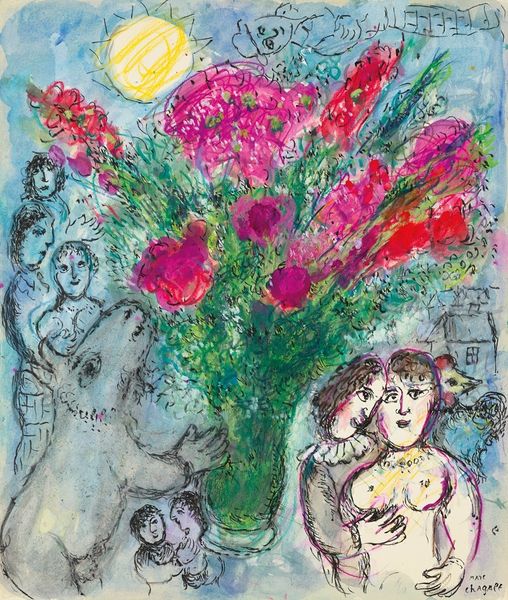
Copyright: Modern Artists: Artvee
Editor: We're looking at Marc Chagall's "The Painter and the Bride with Three Colors," painted in 1984 using oil paint. It's…well, it’s certainly vibrant! The bold color choices are striking, and the composition feels dreamlike. How do you interpret this work from a formal perspective? Curator: Let us examine the relationship between the colour palette and composition. Note the stratification of space. How the artist utilises the division of color into at least three key segments within the art piece; primarily using a vibrant range of green, red, and blue. Further note the subject divisions between wedding, painting, and figures; then examine how all segments appear in each of the strata described. Is this intentional? What do we know? Editor: I see what you mean! It’s like each zone bleeds into the other through shared colours and figures, blurring the lines between them. Is he commenting on the role of the painter by painting one inside? How do you mean? Curator: Observe how the formal aspects of line, shape, and colour all merge. What lines do we see crossing from colour zone to subject zone? Is the artist placing importance on one over the other? I encourage the examination of placement of the lines as a key indicator. It could reveal some intentions that cannot be seen immediately. Editor: It's amazing how just looking at the composition and color relationships reveals so much! Thank you. Curator: Indeed, by carefully observing these artistic relationships in the material presentation, we enable better understanding.
Comments
No comments
Be the first to comment and join the conversation on the ultimate creative platform.
